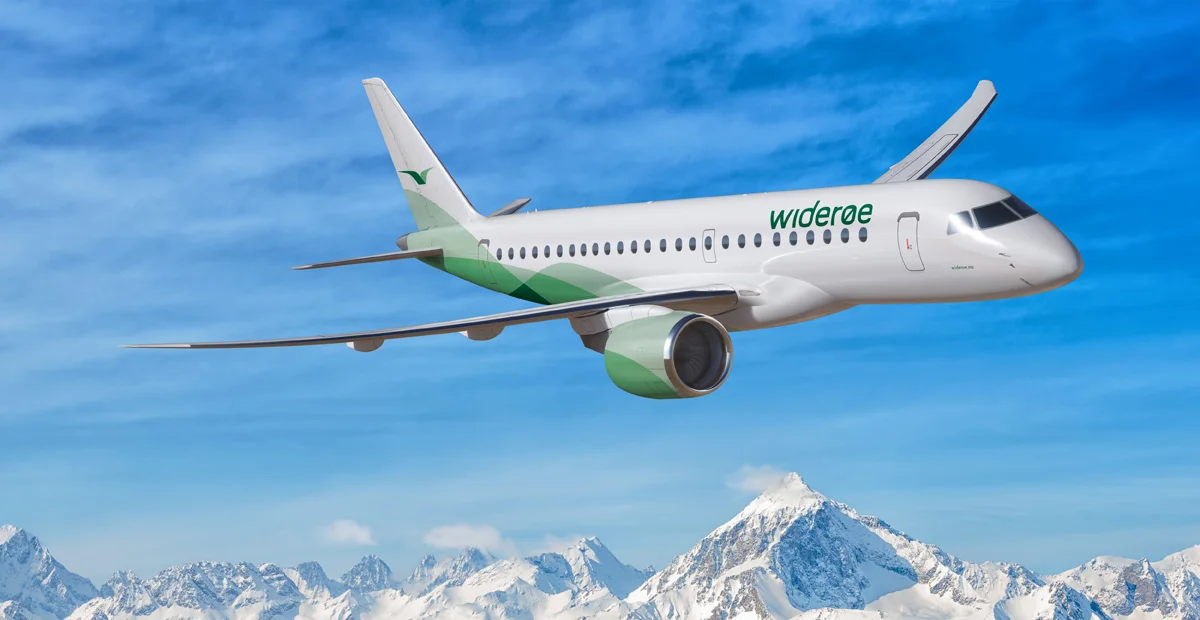In Norway’s challenging landscape of fjords, mountains, and remote islands, one airline has been essential in connecting communities for nearly nine decades: Widerøe (Wideroe). As Scandinavia’s largest regional airline, Wideroe plays a vital role in Norway’s transportation infrastructure, providing crucial links between remote areas and urban centers.
History: From Seaplanes to Modern Aviation
Wideroe was founded on February 19, 1934, by Norwegian aviator Viggo Wideroe along with Einar Isdahl and Arild Widerøe. The airline initially focused on general aviation activities including aerial photography, ambulance flights, and scenic tours for skiers.
In 1936, Wideroe expanded into scheduled seaplane services. During the 1940s and 1950s, the company grew its seaplane routes and established a fleet primarily composed of de Havilland Canada DHC-3 Otter and Noorduyn Norseman aircraft. These seaplanes served routes that were considered too small for larger carriers like Scandinavian Airlines System (SAS).
A turning point came in the late 1960s with the construction of Norway’s regional airport network. In 1968, Wideroe introduced the Twin Otter aircraft, perfectly suited for short-take-off-and-landing (STOL) capabilities needed at these new airports. The 1980s saw further expansion with the introduction of the larger de Havilland Canada Dash 7 aircraft.
Between 1993 and 2000, the airline underwent a complete fleet renewal, replacing all aircraft with various models of the de Havilland Canada Dash 8. The SAS Group gradually acquired Wideroe between 1997 and 2002, making it a wholly-owned subsidiary. After more than 15 years under SAS ownership, Wideroe was acquired by an investor group led by Torghatten ASA in 2013. Today, Wideroe operates as a subsidiary within the Norwegian Aviation Group.
Fleet Information and Statistics
Wideroe currently operates a fleet of 48 aircraft:
- 45 De Havilland Dash 8 turboprops in various configurations
- 3 Embraer 190-E2 jets
This makes Wideroe the world’s largest operator of the Dash 8-100 series. For many years, Wideroe operated exclusively turboprop aircraft, but this changed in April 2018 when the airline received its first Embraer 190-E2 jet, becoming the global launch customer for this modern regional jet.
The company employs approximately 3,500 people and carries around 2.8 million passengers annually. Wideroe performs about 450 take-offs and landings each day, operating flights to 49 domestic and international destinations. The airline’s annual turnover amounts to approximately 3.5 billion Norwegian kroner (NOK).
Wideroe business is divided between commercial routes (about 60% of operations) and tender routes on the short-haul network (about 40% of operations). These tender routes are operated under contract with the Norwegian Ministry of Transport as part of the country’s public service obligation to maintain connections to remote areas.
Network and Hubs
Wideroe’s extensive network is centered around several key hubs across Norway:
- Sandefjord Airport, Torp
- Oslo Airport, Gardermoen
- Bergen Airport, Flesland
- Bodø Airport
- Tromsø Airport
The airline maintains its headquarters in Bodø, with a large administrative center in Oslo and a smaller office in Mosjøen. Wideroe also operates a technical base in Florø.
Wideroe’s route network primarily serves domestic Norwegian destinations, acting as a lifeline for many communities with limited transportation alternatives. The airline connects major cities like Oslo, Bergen, and Tromsø with smaller towns and remote areas across Norway. Many of these routes are operated as part of the government’s public service obligation program.
In addition to its domestic network, Wideroe operates international services to selected destinations in Sweden, Denmark, and the United Kingdom, including Copenhagen, Gothenburg, Aberdeen, Liverpool, and London Heathrow.
Quick Facts
- Founded: February 19, 1934
- Founder: Viggo Widerøe
- Headquarters: Bodø, Norway
- Type: Regional airline
- Parent Company: Norwegian Aviation Group
- Annual Passengers: 2.8 million
- Daily Flights: Approximately 450
- Fleet Size: 48 aircraft
- Destinations: 49 (domestic and international)
- Employees: 3,500
- Annual Turnover: 3.5 billion NOK
- IATA Code: WF
- ICAO Code: WIF
- Main Hubs: Sandefjord, Oslo, Bergen, Bodø, Tromsø
- Unique Feature: World’s largest operator of Dash 8-100 aircraft
- First Jet Aircraft: Embraer 190-E2 (introduced in 2018)
Contact Information
For passengers needing to reach Wideroe, several contact options are available:
Customer Service:
- Phone: (+47) 75 53 50 10 (option 3)
- Email: support@wideroe.no
Head Office:
- Widerøes Flyveselskap AS
- Langstranda 6, Postboks 247
- N-8001 Bodø, Norway
- Phone: +47 75 51 35 00
Oslo Office:
- Fornebuveien 11
- 1366 Lysaker, Norway
- Open Monday-Friday: 06:00 – 00:00
Online Channels:
- Website: www.wideroe.no
- Flight Status: Available through the website’s flight status service
Passengers should note that while Wideroe recommends booking through their official website or authorized partners, for bookings made by phone, a service fee of NOK 300 per ticket may apply.
Future Outlook
Wideroe faces both challenges and opportunities as it looks to the future. One significant challenge is fleet renewal, as many of its Dash 8-100 aircraft are approaching the end of their service lives. Rather than immediately replacing these aircraft, Wideroe has taken an innovative approach.
In April 2022, Wideroe became the launch customer for De Havilland’s Extended Service Program PLUS, which will extend the service life of at least ten of its Dash 8-100 turboprop aircraft to 160,000 flight cycles, effectively doubling their original service life. This program serves as a bridge solution while the airline waits for zero-emission technology to mature for regional aviation.
Environmental sustainability is a key focus for Wideroe’s future strategy. The airline has established Wideroe Zero, a subsidiary dedicated to identifying suitable zero-emission aircraft to replace its short-haul fleet. The company’s objective is to be first in line when zero-emission technology becomes commercially available for regional aviation. Wideroe aims to introduce its first zero-emissions aircraft by 2026, though this depends on technological developments.
Wideroe has engaged in collaborative research and development projects with industry players like Rolls-Royce and Embraer to advance zero-emission aviation technology. These partnerships highlight Norway’s position as an attractive market for testing and implementing new aviation technologies.
Keyword: TopAirlines

